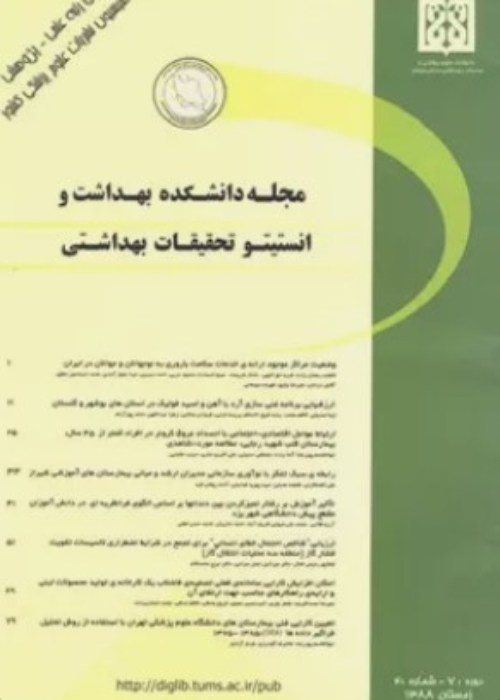Prevalence of intestinal parasites in Esfahan municipal workers
Author(s):
Abstract:
Background And Aim
Intestinal parasites cause significant morbidity and mortality and are considered by the World Health Organization as a public health problem of global importance. These agents are estimated to infect more than three billion people worldwide. In Iran, thanks to long-time efforts by the national health system (including environmental sanitation and public education campaigns), the frequency of the most intestinal parasitic infections has significantly declined in the recent decades. Our study aimed to determine the prevalence of intestinal parasites in a high-risk occupational group, namely the municipal workers in the city of Esfahan.Materials And Methods
A survey was conducted to determine the prevalence of intestinal parasitic infections among municipal workers in several districts of Esfahan. Specimens were placed into fecal pots, labeled and kept cool before being transported to the Health Research Center Laboratory, affiliated to the School of Public Health & Institute for Public Health Research in Tehran University of Medical Sciences. The technique used for identifying infections was stool concentration by formalin & ether. All the slides were carefully studied using light microscopy with ×10, × 40, and ×100 magnification.Results
The study results revealed that 24.6% of the workers harbored at least one parasitic species. The highest prevalence (36%) belonged to Giardia lamblia. Ascaris lumbricoides was the most common helminthic parasite (12.4%), followed by Hymenolepis nana (1.2%). The most common non-pathogenic protozoal species was Entamoeba coli (21.7%)Conclusion
Infection with soil parasites is dependent on environmental conditions that allow parasites to complete their life cycle. Socioeconomic and cultural factors are important for the appearance and spread of intestinal parasites in communities where sanitary conditions and infrastructure are inadequate. However, soil-transmitted helminthiasis (STH) used to be prevalent throughout the country, especially in urban and rural population of the Esfahan Province. We investigated the prevalence of intestinal parasites by fecal examination of workers in Esfahan municipality, a group with a low-sanitation working environment close contact with soil contaminants. The lack of information on prevalence in the general population makes it difficult to arrive at any definite conclusions, but on the basis of unpublished data we can conclude that prevalence is somewhat higher in this occupational group compared to the population at large.Language:
Persian
Published:
Scientific Journal of School of Public Health and Institute of Public Health Research, Volume:5 Issue: 3, 2008
Page:
43
magiran.com/p567777
دانلود و مطالعه متن این مقاله با یکی از روشهای زیر امکان پذیر است:
اشتراک شخصی
با عضویت و پرداخت آنلاین حق اشتراک یکساله به مبلغ 1,390,000ريال میتوانید 70 عنوان مطلب دانلود کنید!
اشتراک سازمانی
به کتابخانه دانشگاه یا محل کار خود پیشنهاد کنید تا اشتراک سازمانی این پایگاه را برای دسترسی نامحدود همه کاربران به متن مطالب تهیه نمایند!
توجه!
- حق عضویت دریافتی صرف حمایت از نشریات عضو و نگهداری، تکمیل و توسعه مگیران میشود.
- پرداخت حق اشتراک و دانلود مقالات اجازه بازنشر آن در سایر رسانههای چاپی و دیجیتال را به کاربر نمیدهد.
In order to view content subscription is required
Personal subscription
Subscribe magiran.com for 70 € euros via PayPal and download 70 articles during a year.
Organization subscription
Please contact us to subscribe your university or library for unlimited access!


